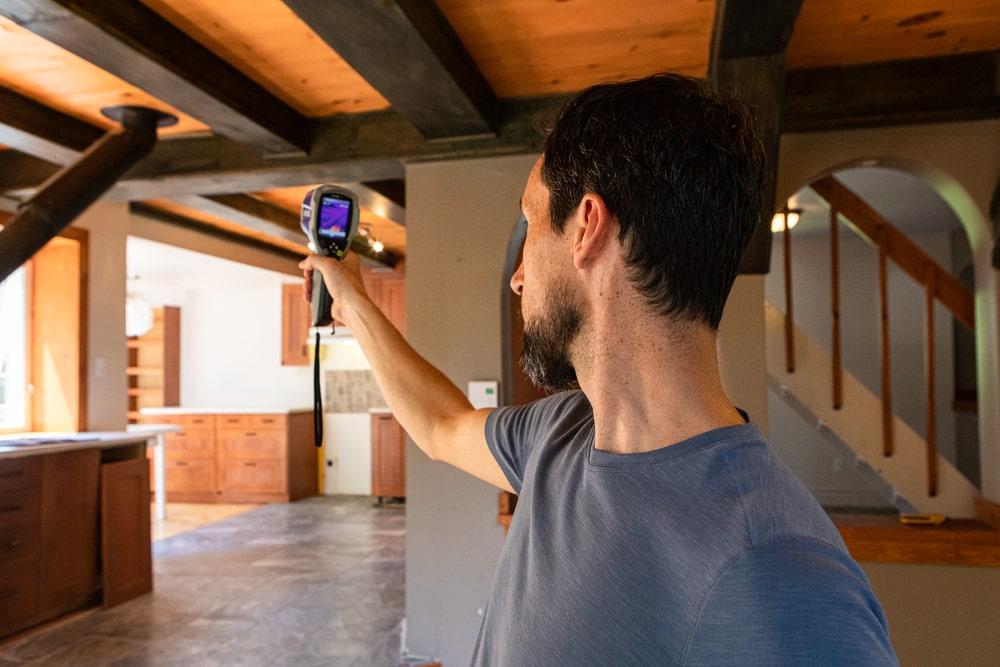When we believe that there is a major pollutant in our home, our immediate instinct is to assess the pollutant levels. Indoor air quality monitoring may be a helpful resource, but it must be done strategically and selectively.

The good news is that if you are in Mississauga, testing the air is simpler than you would believe. By approaching air testing with caution, you can help to maintain a healthy indoor atmosphere. Testing the air, whether you do it yourself or hire an expert, lets you make the best choices for your house.
What is the significance of indoor air quality testing?
Indoor air pollution may cause a variety of difficulties, from minor irritations like nose and eye annoyances to long-term health problems like cancer and heart disease. If you don’t breathe in a lot of dust or animal dander, you’re less likely to have allergies or have trouble with respiratory problems like asthma. This is why ensuring the quality of indoor air is important.
How is air quality examined?
We can take strategic steps to produce cleaner air in the household now that we realize the value of a cleaner indoor space. However, you can’t attempt to decrease pollution until you know what contaminants are present in the air. When it comes to testing the atmosphere for various contaminants, you have two options, you may do it yourself or employ professional services for air quality testing in Mississauga.
Let’s look at some specifics to determine which one is best for your home:
-
Mold Examinations
Let us start with mold, a dreadful fungus. Mold can waft into your house through doors, vents, and ducts, or it may be transported in by sticking to shoes and clothing.
Mold is everywhere. Stepping outside exposes you to naturally existing mold, which is not that unsafe. However, mold development in a home is an issue. Generally, mold grows in a damp, chilly, dark environment such as a basement, and degrades the interior air quality considerably.
-
Evaluations of Carbon Monoxide
When individuals are exposed to low levels of carbon monoxide, they may experience fatigue and breathlessness. People begin to feel headaches, disorientation, nausea, and flu-like sensations in greater concentrations. It is lethal when the toxin hits in extremely large amounts.
These detectors are placed all throughout the house and must be inspected on a regular basis to ensure proper functioning.
-
Lead tests in the atmosphere
Many sources, including mining and metal processing plants, emit microscopic lead particles into the atmosphere. Trash landfills, certain battery makers, and corporations are all contributors to atmospheric lead.
If you detect lead in the paint, then you may be able to quickly paint over the preexisting layer, trapping the lead and preventing it from being dispersed into the air. Still, one may have to have the chipped paint properly removed to prevent further contamination.
-
Volatile Organic Compound Measurements
This form of household air pollution contains a wide range of pollutants, which can have a variety of acute and long-term health impacts. VOCs are an issue indoors since concentrations might be much higher than outside.
There are several home testing kits available for VOC testing, but before we rush out to get the test kits, keep in mind that while home sample kits can provide some sense of VOC levels in the household, flaws in the sampling process might introduce inconsistencies in the results. Thus, it is always best to consider contacting a professional to get the job done.
Conclusion
You might consider employing professionals for these services when you want a report that is exceptionally credible and trustworthy. One of the primary advantages of having a professional do the test is that you might receive accurate, dependable findings.
While at-home testing and kits are often simple to use and highly efficient, having a professional perform the testing removes some of the guesswork and eliminates the worry that your findings will be imperfect. We hope that these guidelines have answered your questions regarding testing for indoor air quality and clarity in evaluating the best approach to enhance the air in your household.
Image by Depositphotos





